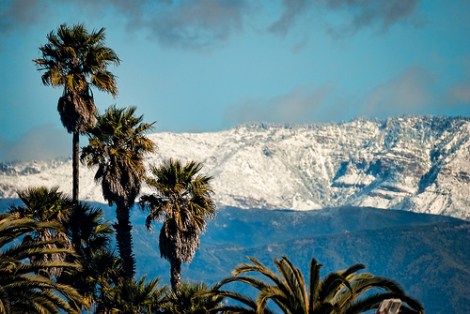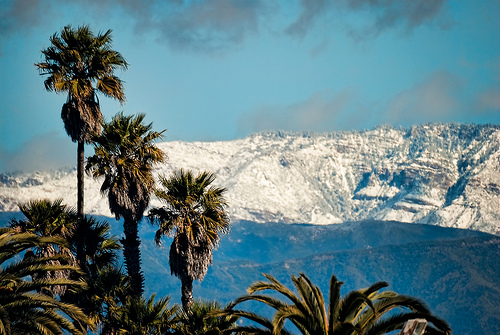
Photo by Wendell.
A new study examining 50-million-year-old ice from Antarctica indicates that the continent used to be covered in warm-weather flora like palm trees. And hey, maybe it could be again if carbon dioxide levels get too high!
By “too high” we’re talking about really high — CO2 concentrations in the early Eocene epoch, the time period that the new study is looking at, were in excess of 1,000 parts per million (ppm) by volume. Safe levels for human habitation, according to NASA scientist James Hansen, top out at 350 ppm. There weren’t any humans or proto-humans on Earth in the Eocene, nor would there likely be any if we got up to 1,000 ppm again, so don’t plan your tropical Antarctic vacation just yet. But it looks like there was a time when the frozen continent was a palmy getaway, where winter temperatures didn’t drop below 50 degrees F.
The ice cores that researchers drilled out of the coast of East Antarctica included pollen and spores from “temperate and paratropical” (i.e. warm-weather) plants, plus other data that helped scientists piece together a reconstruction of the continent’s early climate. What they found is that polar conditions 50 million years ago were so mild that even during the months-long darkness of winter, there was probably no frost on the ground.
Researchers aren’t saying that runaway carbon emissions will bring the palms back to the poles — for starters, it was a combination of factors that led to the balmy temperatures, not just carbon. But they aren’t precisely saying they won’t, either. What they’re saying is that Antarctica “may provide insight into the response of Earth’s climate and biosphere to the high atmospheric carbon dioxide levels that are expected in the near future as a consequence of unabated anthropogenic carbon emissions.” In other words, we’re not committing to anything, but maybe leave a note for your great-great-great-grandkids to invest in Antarctic coconut futures. If they’re still alive.



